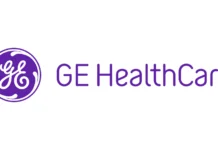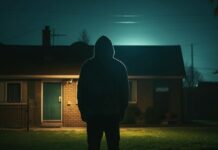As a healthcare institution, statistics have shown that it’s only a matter of time before you are faced with a malpractice claim. Whilst you can’t stop it from happening, you can decrease the chances of it happening.
Malpractice can be defined as any behavior by the healthcare institution that’s deemed to be unprofessional, improper, or illegal that results in the injury or harm of a patient.
Healthcare institutions follow a code of ethics and standard operating procedures approved by respected medical organizations. When a patient then claims that they’ve been harmed due to negligence or unprofessional behavior, prompt investigation is then conducted to verify the veracity of the claim.
This unprofessional behavior may take various forms, from failure to communicate effectively to incorrect capturing of data which leads to misdiagnosis and could then result in injuries to the patient. For more facts about malpractice, get details from other trusted sources.
This article will strive to highlight a few points that a healthcare institution can implement to reduce the instances of malpractice claims being thrown at them.
-
Improve Communication
Effective communication between doctors and patients is very important and can reduce malpractice issues in various ways. Developing a good rapport with your patients will help them disclose all their relevant medical information and this in turn, reduces the chances of a diagnostic error.
When a doctor is communicating with a patient, they should:
- Listen carefully to the patient’s concerns
- Answer all questions and concerns clearly
- Give the patient realistic goals and expectations.
However, it’s not only the doctors that can lead to a lawsuit. The attitude of the medical staff is also important in decreasing the risk of a lawsuit. Staff need training on how to handle difficult individuals and diffuse potentially damaging situations amicably.
They should also explain any delays that might occur during treatment, diagnosis, or any other service provided in the institution. The clear communication of this will diffuse any anger accumulated due to the waiting.
Clinical staff needs to be trained to handle cross-cultural communication and how to navigate language barriers. It’s a common occurrence for misinterpretation to occur across cultural barriers and this can lead to misdiagnosis and mistreatment of patients.
-
Create Strong Policies
A strong policy and solid procedure are key to avoiding malpractice risks. Naturally, when procedures are followed well, negligence is minimal. Your institution’s policies should cover the following critical areas.
- Policies Related to Electronic Documentation: Staff should be trained in the proper logging in of data. This will decrease the risk of data capturing errors that would lead to misdiagnosis.
- Scope of Practice: Policy details the tasks each staff member can perform, which type of patients they are allowed to see and whether they can do so with or without supervision.
- Care Protocol Policy: These protocols refer to policies regarding appointments(cancellations), for patient inquiries and complaints, and for doing patient follow-ups for tests and test results.
- Telephone Triage Policies: These are policies that determine who can answer what type of questions concerning the patient. Doctor and patient confidentiality are included under this policy.
It’d be prudent to hire a medical malpractice attorney for your medical institution who will help set up strong policies that will protect your business.
-
Documentation
Great documentation will help reduce the risk of a malpractice lawsuit. It’s the backbone of a successful defense if a patient wants to sue you. Records are the easiest way to prove whether the series of events unfolded in the way described by the disgruntled patient.
Important documentation to keep includes:
- Consent Forms: It’s best to know and understand the laws surrounding consent in your region and to adhere to them. There are plenty of medical procedures that require written, informed consent. Even for procedures that don’t require consent, it’s best to explain as clearly as possible the risks involved and always keep documentation proving that these risks were explained.
- Patient’s Medical History: It’s important not only to know about your patients’ medical history but to have it documented. This information played a role in the present diagnosis and treatment of the patient.
- Documentation of Patient Instructions: In a patient’s files, have copies of all instructions related to treatment. Any medications prescribed all instructions given concerning treatment and administration of prescribed medication should be well documented. As well as all alternative treatments and medicines discussed with the patient need to be recorded.
Conclusion
To conclude, if you have noticed, most of these points boil down to one thing, transparency. The aim is to be as transparent as possible when dealing with patients, to avoid mishaps and misinterpretation of information. Transparency mitigates the fears doctors face when dealing with these lawsuits.
While it’s not a surefire way to eliminate the risk of malpractice lawsuits, improving communication, creating strong policies, documentation, and transparency goes a long way in mitigating the risk.


















